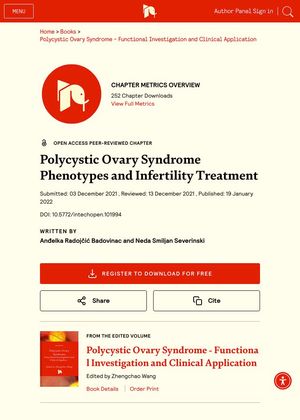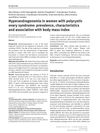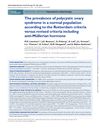Polycystic Ovary Syndrome Phenotypes and Infertility Treatment
January 2022
in “
IntechOpen eBooks
”

TLDR Different PCOS types respond uniquely to infertility treatments, with some having lower pregnancy rates and higher risks of complications.
Polycystic Ovary Syndrome (PCOS), affecting 5-15% of women of reproductive age, is a common cause of infertility and accounts for about 70% of ovulation disorders. The syndrome has four recognized phenotypes, each with different responses to infertility treatments. Hyperandrogenism and chronic anovulation negatively impact the cumulative pregnancy rate in medically assisted reproduction. PCOS patients also have a higher risk of developing ovarian hyperstimulation syndrome (OHSS). For every 1 pg./ml increase in free testosterone, the proportion of clinically confirmed pregnancies decreases by 50-60% in patients with phenotype A and B. However, the number of good embryos for transfer is higher in patients with hyperandrogenism and ovulation disorder, but without the typical PCO morphology of the ovaries (phenotype B). The proportion of pregnancies and the number of couples with born children do not differ significantly among different PCOS phenotypes. Hyperandrogenism and high concentrations of AMH can lead to poorer oocyte quality, especially in patients with classic PCOS phenotype (A and B) associated with insulin resistance and obesity. Improving in vitro maturation (IVM) techniques can increase the success of IVF/ICSI procedures in PCOS patients and lower the risk of OHSS.




